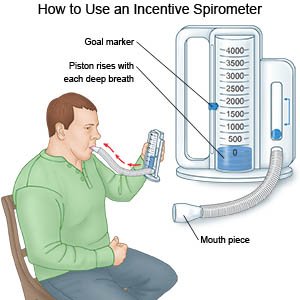Bladder Neck Suspension
Medically reviewed by Drugs.com. Last updated on Aug 4, 2025.
A bladder neck suspension is surgery to move your bladder and urethra back into their correct positions. This surgery is used to treat stress incontinence. You may leak urine when you strain, such as when you cough, sneeze, laugh, or lift a heavy object.
WHILE YOU ARE HERE:
Before your surgery:
- Informed consent is a legal document that explains the tests, treatments, or procedures that you may need. Informed consent means you understand what will be done and can make decisions about what you want. You give your permission when you sign the consent form. You can have someone sign this form for you if you are not able to sign it. You have the right to understand your medical care in words you know. Before you sign the consent form, understand the risks and benefits of what will be done. Make sure all your questions are answered.
- An IV is a small tube placed in your vein that is used to give you medicine or liquids.
- Anesthesia is medicine to make you comfortable during surgery. Your anesthesiologist will talk to you about the best kind of anesthesia for you. You may be given general anesthesia to keep you asleep and free from pain during surgery. Spinal or epidural anesthesia may instead be given to numb the area. You may still feel pressure or pushing during surgery if you have spinal or epidural anesthesia.
During your surgery:
- Your surgeon will make an incision in your vagina. Another incision may be made in your lower abdomen. He or she will put stitches around your bladder to hold it up against your abdominal wall. This helps prevent urine from leaking when you strain.
- The incision will be closed with stitches. Gauze bandages with medical cream may be put in your vagina. This will help you heal and will lower the risk for infection.
Related medications
After your surgery:
You will be taken to a room to rest until you are fully awake. You will be monitored closely for any problems. Do not get out of bed until your healthcare provider says it is okay. You will then be able to go home or be taken to your hospital room.
- A Foley catheter is a tube put into your bladder to drain urine into a bag. Keep the bag below your waist. This will prevent urine from flowing back into your bladder and causing an infection or other problems. Also, keep the tube free of kinks so the urine will drain properly. Do not pull on the catheter. This can cause pain and bleeding, and may cause the catheter to come out.
- Take deep breaths and cough 10 times each hour. This will decrease your risk for a lung infection. Take a deep breath and hold it for as long as you can. Let the air out and then cough strongly. Deep breaths help open your airway. You may be given an incentive spirometer to help you take deep breaths. Put the plastic piece in your mouth and take a slow, deep breath. Then let the air out and cough. Repeat these steps 10 times every hour.

- You will be able to eat and drink gradually after surgery. You will begin with ice chips or clear liquids such as water, broth, juice, and clear soft drinks. If your stomach does not become upset, you may then eat soft foods, such as ice cream and applesauce. Once you can eat soft foods easily, you may slowly begin to eat solid foods.
- Ice will be applied between your legs to decrease pain and swelling. Ice may be applied for 15 to 20 minutes every hour as needed.
- Medicines:
- Pain medicine may be given. Do not wait until the pain is severe before you ask for more medicine.
- Antibiotics help prevent a bacterial infection.
- Antinausea medicine helps calm your stomach and prevents vomiting.
- Bowel movement softeners make it easier for you to have a bowel movement. You may need this medicine to prevent constipation.
RISKS:
You may bleed more than expected or get an infection. Surgery may block your bladder and cause irritation and difficulty urinating. A fistula (abnormal connection) may develop between your vagina and your rectum. You may get a blood clot in an arm or leg. This may become life-threatening.
CARE AGREEMENT:
You have the right to help plan your care. Learn about your health condition and how it may be treated. Discuss treatment options with your healthcare providers to decide what care you want to receive. You always have the right to refuse treatment.© Copyright Merative 2025 Information is for End User's use only and may not be sold, redistributed or otherwise used for commercial purposes.
The above information is an educational aid only. It is not intended as medical advice for individual conditions or treatments. Talk to your doctor, nurse or pharmacist before following any medical regimen to see if it is safe and effective for you.
Further information
Always consult your healthcare provider to ensure the information displayed on this page applies to your personal circumstances.
